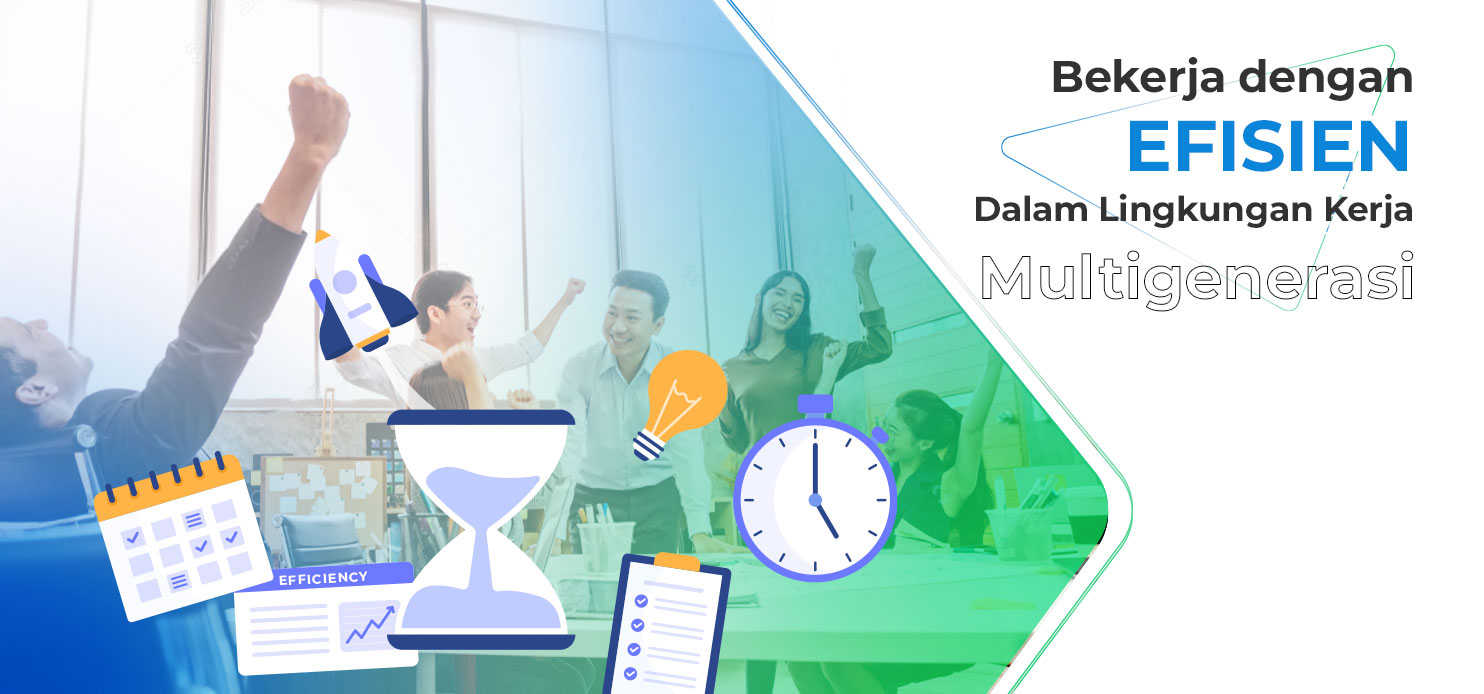Work Efficiently in a Multigenerational Work Environment

What is meant by a multigenerational workforce? Multigenerational workforce refers to a work environment with workers from across generations. Thus, diversity in the work environment is no longer only based on gender, ethnicity, or the character each person brings, but there are also differences in terms of age.
- Wow, definitely a millennial kid!
- It's hard, working with old-fashioned forces!
- Today's young people are difficult to discuss with!
Are you familiar with the words above? Or perhaps you yourself often say such sentences? If yes, perhaps you are currently in a work environment with a multigenerational workforce.
According to The Center of Generational Kinetics in America, there are five generational groups based on birth period in society in general. Currently, some of them are still in their productive working age. The five groups are:
- Traditionalists or Silent Generations, born in 1945 and earlier
- Baby Boomers, born in 1946-1964
- Generation X, born in 1965-1976
- Generation Y or millennials, born in 1977-1995
- Generation Z, born in 1995 and after
Apart from the five generation groups above, there is another generation that was born in the last ten years, namely Generation Alpha. However, currently Generation Alpha is still in their childhood to teenage years, so no one has yet entered the productive working age.
If your work environment consists of employees across ages and generations, then you also need to know in advance what implications arise from these conditions. One of the basic conditions that you may find is a variety of perspectives or points of view towards work.
When you face a problem, you will get various kinds of insights or solutions to handle it. Of course, differences in age will affect differences in perspective and ability to solve problems.
Apart from that, a multigenerational workforce will also provide opportunities for learning processes through mentoring or mentoring from senior employees to juniors. This must of course be seen in a positive context. The reason is, this can be a way to convey knowledge or transfer knowledge, both in the form of theory and practice.
If senior employees are willing to guide junior employees directly, this is an opportunity for juniors to improve and develop their abilities in understanding work. Based on this, of course the company will be one of the parties that benefits, right?
Apart from several of the benefits presented above, of course a multigenerational work environment has its own challenges. Based on the findings of the Academy to Innovate HR (AIHR), several challenges that are often faced in a multigenerational work environment are as follows:
- Differences in communication styles cause differences in understanding of a problem
- Negative stereotypes between generations resulting from a lack of mutual understanding
- Expectations regarding task completion
To be able to overcome the challenges you may face, here are several strategies for a multigenerational work environment that you can implement in your company:
Understand the characteristics of each generation
Each generation certainly has its own advantages and disadvantages. Senior employees may have a hardworking and loyal character, while young employees, who are generally from the millennial generation, are known as tech savvy and have good adaptability.
Therefore, it is very important for company leaders to understand the working styles and skills of their employees. This can help you develop the potential of each employee. This way, it will be easier for you to find the right person to solve a problem.
Eliminate negative stereotypes
You can imagine how uncomfortable it is to work in an environment full of prejudice. Therefore, you as the company leader must eliminate this condition. Improving communication as an effort to increase understanding and mutual trust between generations can be the first step in creating a more harmonious work atmosphere.
The importance of collaboration and guidance
We have understood that each generation has its own way of looking at things or problems. Through collaboration and good communication, imagine what solutions and innovations you can find when discussing. Of course this will not work if every employee is still closed to each other.
That way, company leaders must ensure that all employees are open to input, even if it comes from the younger generation. If this has been established, of course senior employees will be happy to guide and share knowledge and experience with their juniors.
